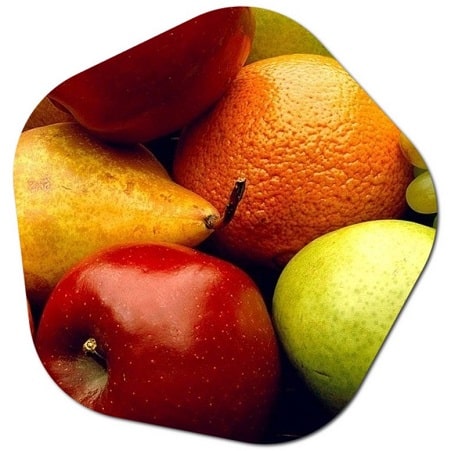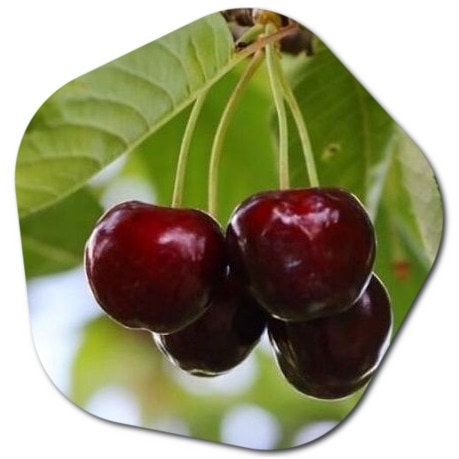Belgium has a favorable climate for growing a variety of fruit trees. The country is known for its orchards and fruit production. Here are some of the fruit trees commonly grown in Belgium:
- Apple Trees (Malus domestica): Apples are one of the most widely grown fruit trees in Belgium. There are numerous apple varieties cultivated, including popular ones like Jonagold, Golden Delicious, and Granny Smith.
- Pear Trees (Pyrus communis): Pears are also extensively cultivated in Belgium. The country is renowned for its high-quality pears, such as Conference, Doyenné du Comice, and Beurré Hardy.
- Cherry Trees (Prunus avium): Cherries thrive in Belgium’s climate and are a popular fruit tree. Varieties like Burlat, Lapins, and Bigarreau Napoleon are commonly grown for their delicious fruits.
- Plum Trees (Prunus domestica): Plums are grown in Belgian orchards, and several plum varieties are cultivated, including Stanley, Reine Claude, and Mirabelle.
- Peach Trees (Prunus persica): Peaches can be grown successfully in certain regions of Belgium with favorable microclimates. Varieties like Red Haven, Elegant Lady, and Suncrest are grown for their juicy fruits.
- Apricot Trees (Prunus armeniaca): Apricot trees can be found in Belgian orchards, although their cultivation is relatively limited compared to other fruit trees. Hardy varieties like Moorpark and Goldrich are grown in suitable areas.
- Sour Cherry Trees (Prunus cerasus): Sour cherries, also known as tart cherries or Morello cherries, are grown for culinary purposes, including jams, pies, and beverages. Varieties like Montmorency and Morello are commonly cultivated.

These are just a few examples of fruit trees that thrive in Belgium. The country’s fertile soils and favorable climate contribute to successful fruit production, making Belgian orchards a significant part of the agricultural landscape. Common varieties of fruit trees grown in Belgium >>
Where are pears grown in Belgium?
Pears are grown in various regions of Belgium, but there are a few areas that are particularly known for their pear cultivation. Here are some of the notable regions where pears are grown in Belgium:
- Haspengouw: Haspengouw is a fertile region located in the province of Limburg in eastern Belgium. It is renowned for its fruit production, including pears. The favorable climate, rich soil, and expertise of local farmers have contributed to Haspengouw’s reputation as a prime pear-growing area.
- East Flanders: The region of East Flanders, particularly around the cities of Aalst and Dendermonde, is known for its pear orchards. The “Denderstreek” area, in particular, is famous for the cultivation of Doyenné du Comice pears, which are highly regarded for their exceptional flavor and quality.
- Brabant Wallon: Brabant Wallon, located in the central part of Belgium, is another region where pears are grown. The orchards in this area, particularly around the towns of Jodoigne and Wavre, produce a variety of pear cultivars, including Conference and Durondeau.
- Flemish Brabant: Flemish Brabant, which encompasses the region around Brussels, is also home to pear cultivation. Orchards in areas like Halle, Dilbeek, and Tervuren contribute to the pear production in this region.
These regions, among others, benefit from the suitable climate, fertile soil, and agricultural expertise that make them conducive to pear cultivation. Pears from these areas are highly regarded for their taste, quality, and contribution to Belgium’s fruit industry.
What is the most common fruit trees Belgium?
The most common fruit trees grown in Belgium are apple trees (Malus domestica) and pear trees (Pyrus communis). Apples and pears are widely cultivated throughout the country, and Belgium is known for its high-quality apple and pear production.

Apple trees are highly popular, and there are numerous apple varieties grown in Belgium, including Jonagold, Golden Delicious, Gala, Granny Smith, and many more. These varieties offer a range of flavors, textures, and uses, making them suitable for various culinary purposes.
Pear trees are also extensively grown in Belgium, with Conference being one of the most widely cultivated pear varieties. Other popular pear varieties grown in the country include Doyenné du Comice, Beurré Hardy, and Durondeau. Belgium’s climate and soil conditions are conducive to producing excellent-quality pears with a sweet and juicy flavor.
While apples and pears are the most common fruit trees in Belgium, other fruit trees like cherry, plum, peach, apricot, and sour cherry can also be found in Belgian orchards, albeit to a lesser extent. These fruit trees contribute to the diversity of the country’s fruit production and add to the richness of its agricultural landscape. What are the popular fruit trees growing in Belgium? >>
How to prune a fruit tree in Belgium?
Pruning fruit trees in Belgium follows general principles that apply to pruning fruit trees in other regions. Here are some guidelines for pruning fruit trees:
- Timing: Pruning is typically done during the dormant season, which is in late winter or early spring before the tree starts to bud. This is usually between January and March in Belgium, depending on the specific tree species and local climate.
- Tools: Gather the necessary tools for pruning, including sharp and clean pruning shears, loppers, a pruning saw for thicker branches, and protective gear such as gloves and safety glasses.
- Remove Dead and Diseased Wood: Start by removing any dead, damaged, or diseased branches. Cut these branches back to healthy wood, making a clean cut just outside the branch collar (the swollen area where the branch meets the trunk).
- Shape the Tree: Prune to maintain an open and balanced shape, allowing sunlight and air circulation into the center of the tree. Remove crossing or crowded branches that rub against each other. Aim for an open center or modified central leader shape, depending on the tree type.
- Control Size: If the tree has become too large or overgrown, selectively prune to reduce its height or spread. Cut back the branches to lateral buds or outward-facing branches, promoting new growth in desired directions.
- Thin Out Excess Branches: Remove some of the smaller, less productive branches to reduce overcrowding and improve light penetration. This allows the remaining branches to receive adequate sunlight and promotes fruit production.
- Prune to Encourage Fruit Production: Depending on the type of fruit tree, consider pruning techniques specific to that tree to stimulate fruiting. For example, with apples and pears, thinning out excessive vertical branches and removing water sprouts can promote better fruit development.
- Step Back and Evaluate: Regularly step back and assess the overall shape and structure of the tree as you prune. Aim for a balanced and visually appealing form.
It’s important to note that different fruit tree species and varieties may have specific pruning requirements, so it’s beneficial to consult specific pruning guides or seek advice from local horticultural experts for precise instructions tailored to the fruit tree varieties you have in Belgium.
